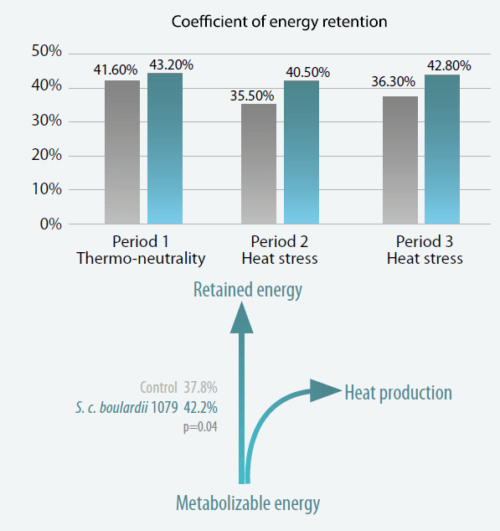Blog | Reading Time 2 minutes
Confirming a gut’s feeling: live yeast improves digestion and energy metabolism in swine
Back in 2005, when we started the application of S. cerevisiae boulardii in sows, certain farmers called us after 5-6 months to mention that they had to reduce the feed allowance in gestation in order to prevent the sows from getting too fat. This is what motivated us to look more closely into this effect.
Yannig Le Treut, General Manager at Lallemand Animal Nutrition and an experienced swine vet, explains how the digestibility research started.
The benefits of Saccharomyces cerevisiae var. boulardii CNCM I1079 on sows and piglet performance around farrowing is well established in Europe. In addition, field experience accumulated over the years also hinted at a positive effect on energy utilization. Today, the scientific proof finally corroborates what farmers had been telling us for years! The positive impact of the live yeast S. c. boulardii on feed efficiency and energy utilization is linked to two main drivers:
- enhanced fiber digestibility
- lower inflammatory metabolism.
Live yeast’s effect on fiber digestibility
By consuming residual oxygen in the sow caecum and colon, S. c. boulardii creates optimal anaerobic conditions for the growth and activity of cellulotytic bacteria. As a result, hindgut fermentation is improved, and more energy is released from the same diet in a shorter time.

Figure 1. Effect of live yeast Saccharomyces cerevisiae boulardii CNCM 1079 on the ratio between metabolizable energy and retained energy during heat stress and thermos neutral periods (INRA Pegase, 2015).
Metabolism modulation and management of inflammation
Inflammation has a huge metabolic cost for the animals. The resources used in the inflammatory response are not used for growth, leading to lower feed efficiency and higher feed conversion ratio. Several studies in humans and piglets (Collier et al., 2010) have demonstrated that S. c. boulardii has the ability to modulate the inflammatory response.
Proof of better energy utilization
A research project was conducted by INRA Pegase, in France, using metabolic chambers on fattening pigs used here as a model for sows. It proved a more efficient use of the metabolizable energy with the live yeast (Fig. 1). This could be even more important when transferred to sows, for which the amount of fiber in the diet is much higher.
Practical implications
The effect of the probiotic on fermentation and energy metabolism is of great interest for all stages of the cycle but has an additional value in gestating sows. It can be applied through a partial energy substitution, partially compensating the inclusion cost of the additive, and still getting all the benefits of its application at farrowing time.
To know more about the European research project on the effect of live yeast on feed digestibility and energy repartition in swine, discover our dedicated technical article!
Published Mar 25, 2019 | Updated May 30, 2023
Related articles
Need specific information?
Talk to an expert